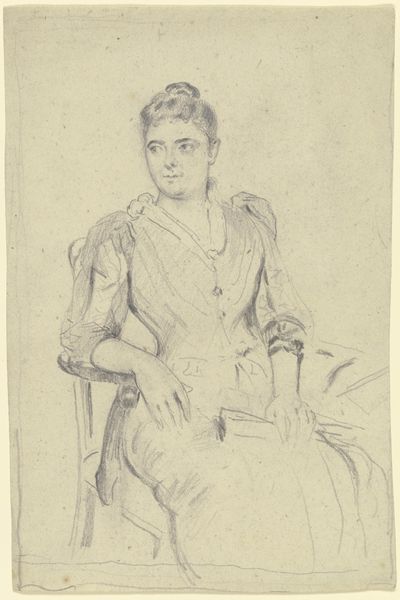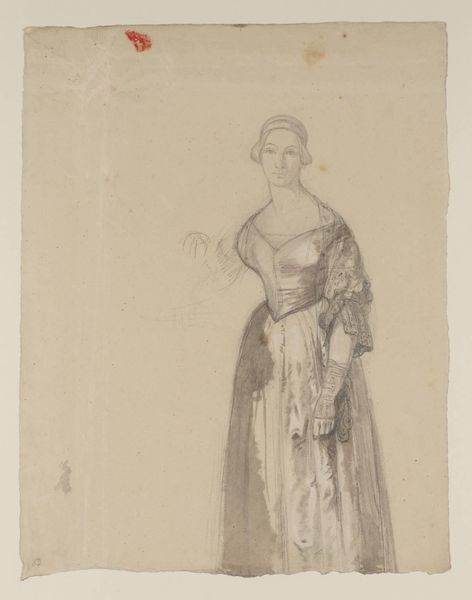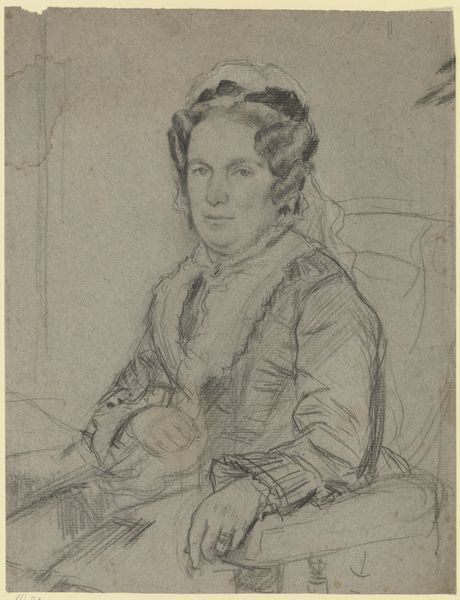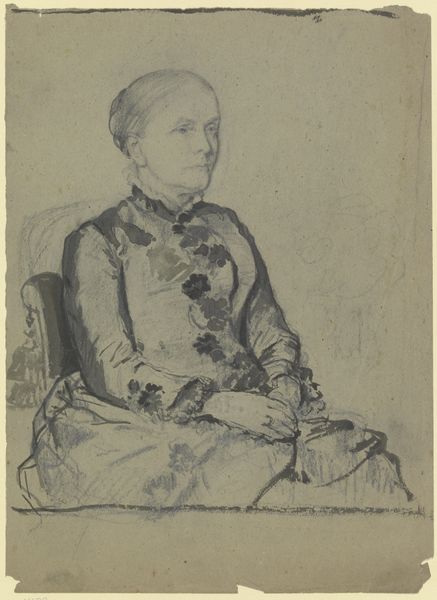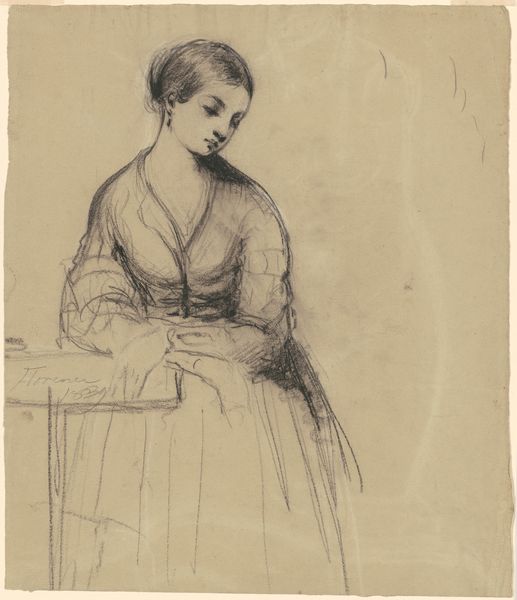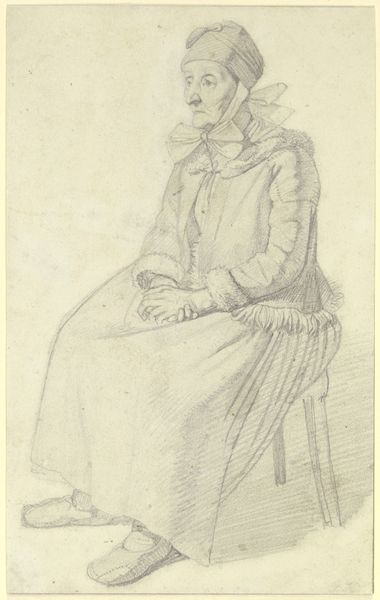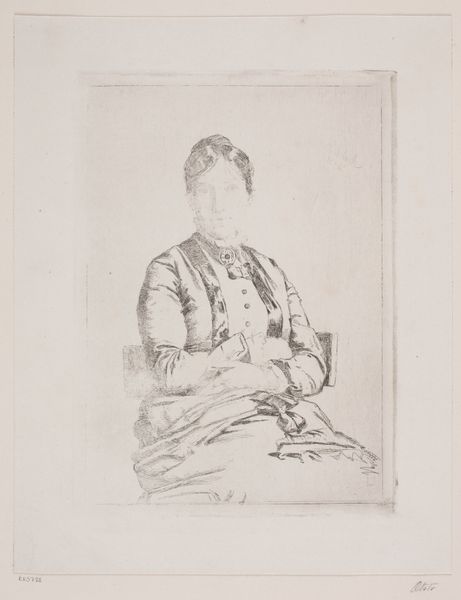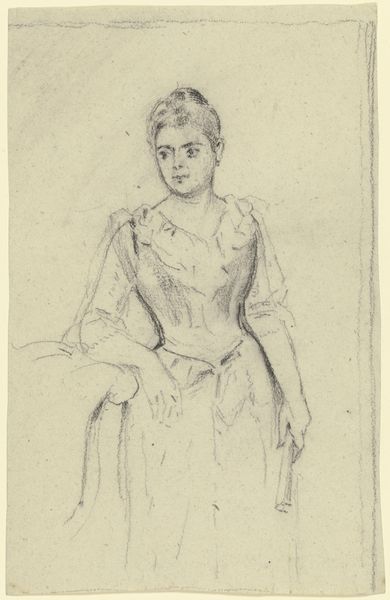
drawing, paper, pencil
#
portrait
#
drawing
#
figuration
#
paper
#
pencil
#
academic-art
Copyright: Public Domain
Curator: Welcome. Here at the Städel Museum, we are face to face with "Sitzende Frau mit Rüschenkleid," or "Seated Woman with Frilly Dress," a pencil drawing on paper by Otto Scholderer. Editor: She looks forlorn, doesn’t she? The slight droop of her shoulders, the downturned gaze… It feels heavy, despite the delicate medium. Curator: Indeed. Scholderer's adept use of line weight creates a palpable sense of melancholy. Notice the detailed rendering of her dress—the precise folds and ruffles, which contrast with the sketchier treatment of the background. Editor: The dress is such a focal point, isn’t it? All that painstaking detail emphasizes how restrictive the fashion of the time was for women. Bound up in all those layers, confined to that small chair, forced into stillness. It's not just a portrait; it’s a commentary on societal constraints. Curator: Perhaps, but let’s also consider the drawing in terms of its formal elements. The composition is carefully balanced, with the figure occupying the central space. The restricted palette of grey tones contributes to the overall mood. Scholderer's academic training is clearly evident in the anatomical accuracy. Editor: Yet, it also begs us to consider who she might have been, this woman, and what her own hopes, dreams, or challenges were within the social fabric of her time. She represents an era where female agency was suppressed. I wonder what stories she held inside. Curator: An intriguing suggestion! Ultimately, it's a very simple drawing of a very complicated thing: the human condition, represented through a portrait. Editor: Exactly! I find it's an intimate view of a life constrained, elegantly rendered. Curator: A final remark, it’s an opportunity to closely consider line and form that reveals so much about artistic skill and period conventions.
Comments
No comments
Be the first to comment and join the conversation on the ultimate creative platform.
